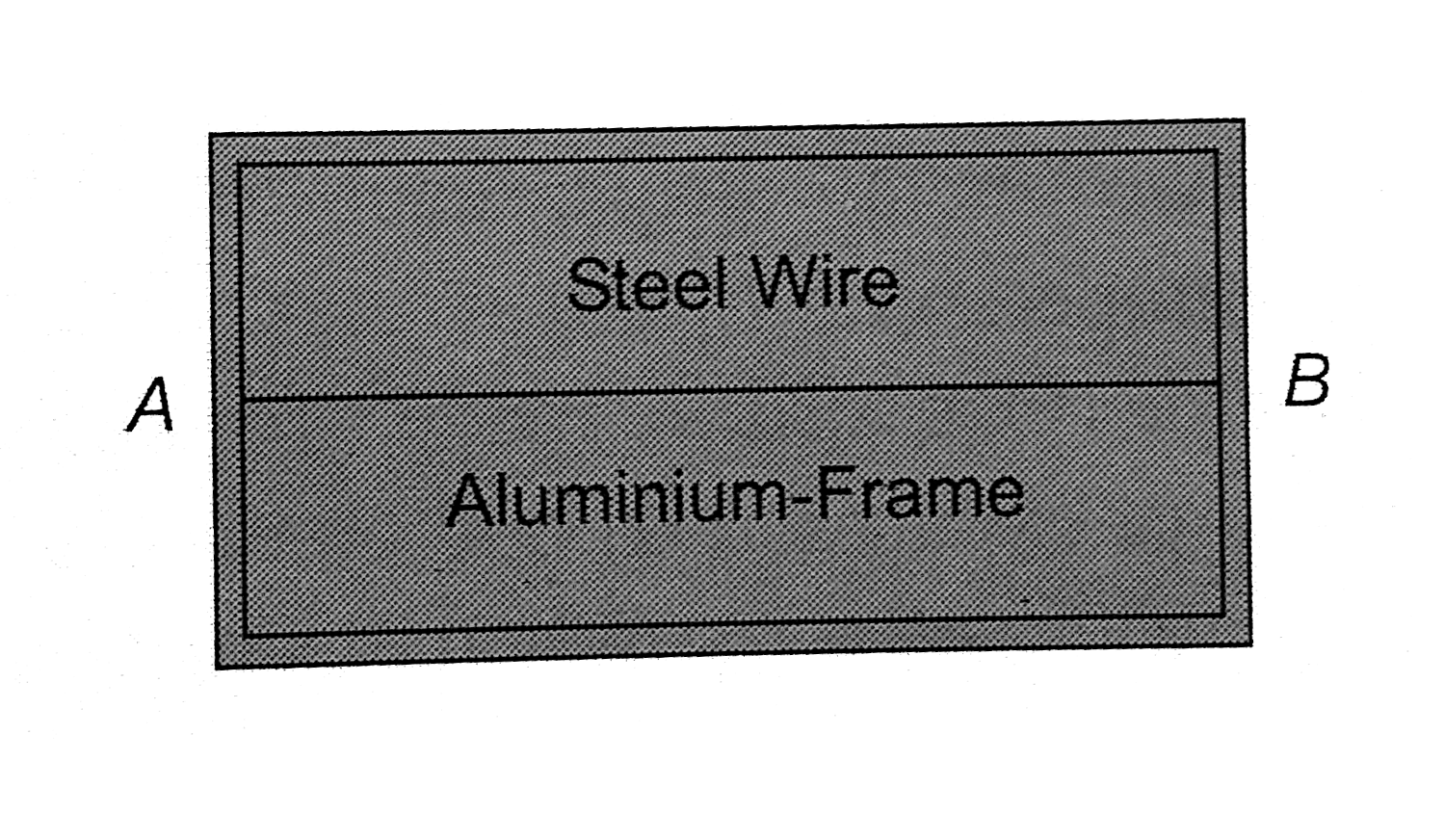A thin brass sheet at 20∘C and a thin steel sheet at 30∘C have the same surface area. The common tempreture at which both would have the same area is (Coefficient of linear expansion for brass and steel are respectively, 19×10−6/∘C are 11×10−6/∘C)
−6.250C
+6.250C
−3.250C
+3.250C
The correct Answer is:B
(A2)brass=(A2)steel
(A1)br[1+βBr(t−20)]=(A1)st[1+βst(t−30)] Given (A1)br=(A1)st
Topper's Solved these Questions
- BOOK - NARAYNACHAPTER - THERMAL PROPERTIES OF MATTEREXERCISE - LEVEL-I(H.W.)21videos
THERMAL PROPERTIES OF MATTER
- BOOK - NARAYNACHAPTER - THERMAL PROPERTIES OF MATTEREXERCISE - Examples50videos
THERMAL PROPERTIES OF MATTER
- BOOK - NARAYNACHAPTER - THERMAL PROPERTIES OF MATTEREXERCISE - LEVEL - III23videos
THERMAL PROPERTIES OF MATTER
- BOOK - NARAYNACHAPTER - SYSTEM OF PARTICLES AND ROTATIONAL MOTION EXERCISE - EXERCISE - IV39videos
SYSTEM OF PARTICLES AND ROTATIONAL MOTION
- BOOK - NARAYNACHAPTER - THERMODYNAMICSEXERCISE - Exercise187videos
THERMODYNAMICS
Similar Questions
What should be the sum of lengths of an aluminium and steel rod at 0∘C is, so that all the temperature their difference in length is 0.25m. (Take coefficient of linear expansion for aluminium and steel at 0∘C as 22×10−6/.∘C and 11×10−5/.∘C respectively.)
View SolutionA steel wire AB of length 85cm at 10∘C is fixed rigidly at points A and B in an aluminium frame as shown. If the temperature of the system is raised to 110∘C , what extra stress will be produced in the wire relative to aluminium frame. Assume that coefficient of linear expansion for aluminium and steel are 23×10−6/∘C and 11×10−6/∘C respectively and Young's moduls for steel is 2×1011 pa.
 View Solution
View Solution
Knowledge Check
- Question 1 - Select One
A thin brass sheet at 10∘C and a thin steel sheet at 20∘C have the same surface area. The common temperature at which both would have the same area is (Coefficient of linear expansion for brass and steel are respectively, 19×10−6/∘C are 11×10−6/∘C)
A−3.75∘CB−2.75∘CC2.75∘CD3.75∘C - Question 2 - Select One
A steel scale is correct at 0∘C. The length of a brass tube measured by it at 40∘C is 4.5 m. The correct length of the tube at 0∘C is (Coefficients of linear expansion of steel and brass are 11×10−6/∘Cand19×10−6/∘C respectively.)
A4.001mB5.001mC4.999mD4.501m - Question 3 - Select One
Two thin metal strips, one of brass and the other of iron are fastended together parallel to each other. Thickness of each strip is 2mm. If the strips are of equal length at 0∘C. The radius of the are formed by the bimetaalic strip when heated to 80∘C is (Coefficient of linear expansion of brass=19×10−6/∘C&
of iron=12×10−6/∘C).A3.57mB2.67mC3.12mD4.56m
At 40∘C, a brass rod has a length 50 cm and a diameter 3.0 mm. it is joined to a steel rod of the same length and diameter at the same temperature. What is the change in the length of the composite rod when it is heated to 240∘C? The coefficient of liear expansion of brass and steel are 2.0×10−5.∘C−1 and 1.2×10−5.∘C−1 respectively:
View SolutionA brass rod length 50 cm and diamteer 3.0 mm is joined to a steel rod of the same length and diameter. What is the change in length of the combined rod at 250∘C if the original length are at 40∘C ? Coefficient of linear expansion of brass and steel are 2.10×10−5.∘C−1 and 1.2×10−5^(∘)C−1 respectively.
View SolutionConsider a brass rod and a steel rod (80 cm longer than brass rod) at 0∘C. It is observed that on increasing temperatures of the two rods by same amount difference in lengths of the two rods does not change. Given that the thermal coefficient of linear expansion for steel and brass are 11×10−6.∘C−1 and 19×10−6.∘C−1 respectively. The sum of lengths of the two rods at 0∘C is
View SolutionA steel wire 2 mm in diameter is just stretched between two fixed points at a temperature of 20∘C. If the temperature falls to 10∘C, then the tension in the wire is (The coefficient of linear expansion of steel = 11×10−6/∘C and Y for steel 2.1×1011N/m2)
View SolutionA steel wire 2 mm is diameter is just stretched between two fixed points at a temperature of 20∘C. If the temperature falls to 10∘C, then the tension in the wire is (Coefficient of linear expansion of steel (α) is 11×10−6/∘CandYs=2.1×1011N/m2)
View Solution

